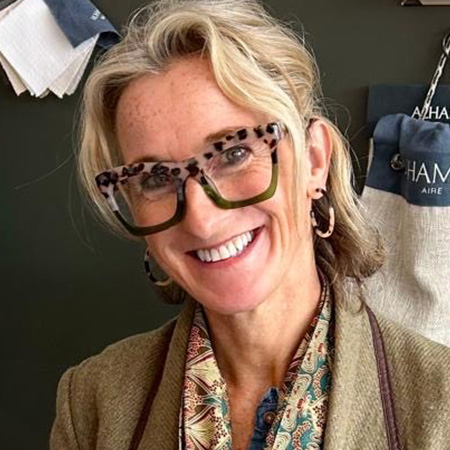Discover your online interior design course
The British College of Interior Design has created this online interior design course with the beginner interior designer in mind. This course is also ideal for those already in the industry, looking for a way to refresh their skills.
The British College of Interior Design has recruited many respected interior designers and design writers to assist you throughout your online interior design course. Their skills and experience, covering all industry areas, will provide you with an intimate knowledge of how to take on any brief.
Explore the course contents below
-
Tutorial 1
This introduction presents you with just some of the many opportunities you have as an interior designer, from colour consultancy to corporate design. The tutorial begins with an exploration of international design periods of the 18th and 19th centuries, to the birth of modern interior design and beyond. You will become familiar with classic furniture pieces, as well as getting to know the essential elements and principles of interior design. This tutorial will begin to help you develop your designer’s ‘eye’, as well as help you put together an inspiration book. This tutorial ends with assignment one. -
Tutorial 2
Tutorial two focuses on essential materials and elements – lighting and colour. You will learn how to use both natural and artificial lighting effectively to bring a space to life, along with the types of lighting, styles and fixtures you can experiment with. You will learn how light and colour interacts, and the psychological impact of colour. This tutorial explores how to use the colour wheel and how colours interact and compliment with each other, as well as how these interactions change the look and feel of a space. You will also look at trends and special features of colour and paint textures. This tutorial ends with assignment two. -
Tutorial 3
Building on tutorial two, tutorial three looks at how to build on your base with textiles. You will explore the world of fabrics; what are the types of fabrics and their construction. You will look at the differences between upholstered and metal furniture, and how to identify quality furnishings. This tutorial looks at window treatments, such as curtain styles and technologies, blinds, and how to measure a window and estimate materials. Furthermore, you will explore floor coverings, walls and doors, the various types, and how they are all made. These will be all tied together with cushions, slip covers and throws. Finally you will develop your individual style through custom-made soft furnishings. -
Tutorial 4
Tutorial four is all about building your own design practice, from developing the traits you need as an interior designer, starting out, and client relations. You will learn how to deal with tradespeople, contractors and suppliers, as well as timber and building terms. You will look at styling small spaces, properties for pre-sale inspection, and how to maximise your clients’ profit. This tutorial ends with assignment three. -
Tutorial 5
Tutorial five looks at planning and presentation for clients. You will learn how to prepare floor plans and scale drawings, as well as how to develop a conceptual and technical understanding of scale and elevation. You will look at example of floor plans and elevations to set you on your way. This tutorial also looks at the story of British interior design, as well as the British architectural periods and interior design styles. -
Tutorial 6
Continuing on from tutorial five, tutorial six looks at how to make your vision for a space come to life. You will look at perspective drawing, gain an understanding of computer assisted design, colour drawing and sample boards. You will learn how to use free-hand drawing as a tool in the creative process rather than a technical end itself. Furthermore, you will be shown how to present colours and finishes to your clients. This tutorial ends with assignment four. -
Tutorial 7
Tutorial seven focuses on residential interior design. Starting from basics, you will learn how to plan kitchen and bathroom spaces, appliance placement, choosing finishes, lighting and storage. You will learn what the suitable materials for these spaces are, as well as consider ventilation and heating. You will be presented with examples of floor plans and elevations, as well as the current trends in kitchen and bathroom design. -
Tutorial 8
Following on from tutorial seven, tutorial eight explores planning residential layouts. This involves establishing moods, styles, establishing a focal point and building up a scheme. From a practical end, this tutorial offers you the essential steps to success in the process of residential design, from the design brief, costing the project, to knowing how much to charge. This tutorial will help you learn how to develop good client relationships, as well as giving you ways to help you define what your clients’ true needs are. You will also explore the smart home, and trends in ecologically sustainable design and retrofitting. This tutorial ends with assignment five. -
Tutorial 9
Tutorial nine focuses on commercial design. You will explore commercial interiors, corporate design and the changes occurring in the modern workplace. You will look at planning space, flexibility, desking systems, ergonomics and government requirements. This tutorial also covers the importance of environmental branding for businesses and effective office design. Assignment six ends this tutorial. -
Tutorial 10
Tutorial ten explores the world of hospitality and retail design. You will learn about the range of design options and functionalities within commercial interiors and in the hospitality sector, such as in restaurants, cafes, bars and hotels. This tutorial looks at designing retail spaces, such as creating a friendship between people and products, effective and engaging product display and design for people with a disability. You will learn how to use flowers within your deigns, as well as building up your resources with useful colour services. -
Tutorial 11
This tutorial looks at designing exhibition spaces, such as galleries, museums and tradeshows, where you will learn to consider thermal comfort, acoustics, and furniture selection as you design these spaces. This tutorial also explores the other various opportunities as an interior designer, such as using your skills as an investment adviser to gaining accesses to trade shows and exhibitions. You will build up a resource of industry trade shows, both locally and internationally, as well as how to keep up with new product information and trends. This tutorial finishes with assignment seven. -
Tutorial 12
For your final tutorial, you will be given all the tools for starting you home-based interior design consultancy. You will learn how to effectively market your skills, boost your business, research and enter new markets and build valuable contacts. This tutorial offers a check list to starting your business, everything from tax planning to marketing and promotion. Tutorial twelve concludes with your final assignment.
.jpg)



